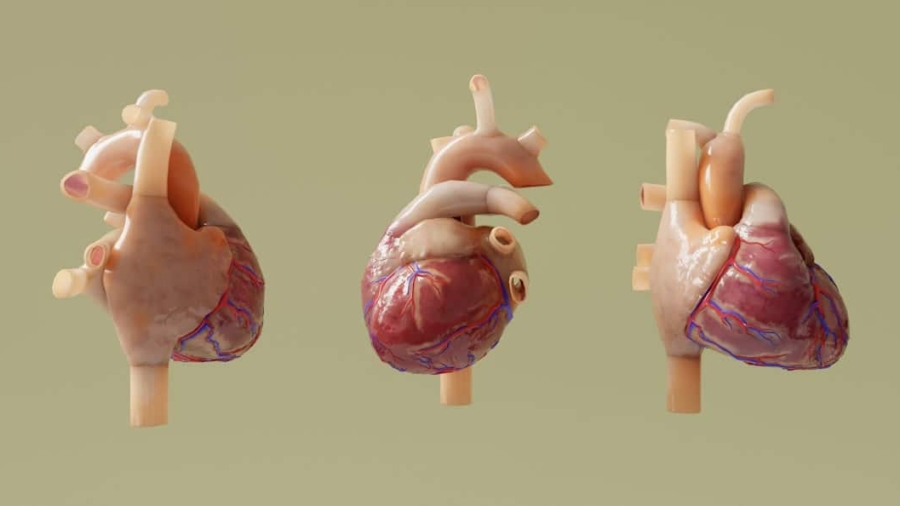CRISPR, an acronym for Clustered Regularly Interspaced Short Palindromic Repeats, represents a groundbreaking advancement in genetic engineering. Initially discovered in the immune systems of bacteria, CRISPR functions as a natural defense mechanism against viral infections. The system utilizes RNA molecules to guide the Cas9 enzyme to specific sequences of DNA, where it can create double-strand breaks.
This ability to target and edit specific genes has revolutionized the field of molecular biology, allowing scientists to manipulate genetic material with unprecedented precision and efficiency. The CRISPR-Cas9 system operates through a two-step process: first, a guide RNA (gRNA) is designed to match the DNA sequence of interest. Once the gRNA binds to its complementary DNA strand, the Cas9 enzyme is recruited to the site, where it introduces a break in the DNThe cell’s natural repair mechanisms then kick in, which can be harnessed to either disrupt the gene or insert new genetic material.
Key Takeaways
- CRISPR technology is a revolutionary gene-editing tool that allows for precise modification of DNA.
- CRISPR has promising applications in medicine, including potential treatments for genetic disorders and cancer.
- Ethical considerations surrounding CRISPR include concerns about unintended consequences and the potential for misuse.
- CRISPR has the potential to revolutionize agriculture by creating crops with improved traits and resistance to diseases.
- Advancements in CRISPR research are leading to new possibilities for treating genetic disorders and developing personalized medicine.
Applications of CRISPR in Medicine
The medical applications of CRISPR technology are vast and varied, with potential implications for treating a range of diseases, including genetic disorders, cancers, and infectious diseases. One of the most promising areas is gene therapy, where CRISPR can be used to correct mutations responsible for hereditary conditions. For instance, researchers have successfully employed CRISPR to target and repair the faulty gene responsible for sickle cell disease, demonstrating the technology’s potential to provide long-lasting cures rather than temporary treatments.
In addition to genetic disorders, CRISPR is being explored as a tool for combating cancer. By editing immune cells to enhance their ability to recognize and attack tumor cells, scientists are developing innovative therapies that could significantly improve patient outcomes. Clinical trials are already underway, testing CRISPR-modified T cells in patients with various types of cancer.
Furthermore, CRISPR’s ability to rapidly identify and modify genes associated with drug resistance in cancer cells could lead to more effective treatment strategies.
Ethical Considerations of CRISPR

As with any powerful technology, the advent of CRISPR raises significant ethical questions that must be addressed. One of the primary concerns revolves around the potential for germline editing—altering genes in embryos or reproductive cells that can be passed on to future generations. This capability opens up a Pandora’s box of ethical dilemmas, including the possibility of “designer babies,” where parents could select traits such as intelligence or physical appearance.
The implications of such choices could exacerbate social inequalities and lead to unforeseen consequences in human evolution. Moreover, the risk of off-target effects—unintended edits to the genome—poses another ethical challenge. While CRISPR is celebrated for its precision, it is not infallible.
Unintended modifications could lead to harmful mutations or even new diseases. The potential for misuse of CRISPR technology also raises alarms; for instance, its application in bioweapons or unethical experimentation could have dire consequences. As researchers continue to explore the boundaries of what is possible with CRISPR, it is imperative that ethical frameworks are established to guide its responsible use.
CRISPR’s Impact on Agriculture
CRISPR technology is not limited to human health; it has also made significant strides in agricultural biotechnology. By enabling precise edits to plant genomes, CRISPR can enhance crop traits such as yield, disease resistance, and drought tolerance. For example, researchers have successfully used CRISPR to develop rice varieties that are resistant to bacterial blight, a major threat to global food security.
This not only helps farmers increase their productivity but also reduces reliance on chemical pesticides. Additionally, CRISPR can facilitate the development of crops with improved nutritional profiles. Scientists have engineered tomatoes with elevated levels of antioxidants and other beneficial compounds, potentially addressing malnutrition in vulnerable populations.
The technology also allows for faster breeding cycles compared to traditional methods, enabling farmers to adapt more quickly to changing environmental conditions and consumer demands. As climate change continues to pose challenges for agriculture, CRISPR offers a promising avenue for creating resilient food systems.
Advancements in CRISPR Research
The field of CRISPR research is rapidly evolving, with ongoing advancements that expand its capabilities and applications.
These enzymes offer distinct advantages; for instance, Cas12 can create staggered cuts in DNA, which may enhance the efficiency of certain gene-editing applications.
Meanwhile, Cas13 targets RNA instead of DNA, opening up possibilities for treating diseases caused by RNA viruses or regulating gene expression without permanent alterations to the genome. Moreover, researchers are exploring ways to improve the delivery mechanisms for CRISPR components into cells. Traditional methods often face challenges related to efficiency and specificity; however, innovations such as lipid nanoparticles and viral vectors are being developed to enhance delivery success rates.
These advancements not only increase the effectiveness of CRISPR-based therapies but also reduce potential side effects associated with off-target edits.
CRISPR’s Potential in Treating Genetic Disorders

The potential of CRISPR technology in treating genetic disorders is one of its most exciting prospects. Conditions such as cystic fibrosis, muscular dystrophy, and hemophilia are caused by specific genetic mutations that could theoretically be corrected using CRISPR. For instance, researchers have demonstrated successful editing of the CFTR gene responsible for cystic fibrosis in patient-derived stem cells, paving the way for future therapeutic applications.
In addition to correcting mutations directly, CRISPR can also be utilized to silence harmful genes or activate beneficial ones. This approach has shown promise in conditions like Duchenne muscular dystrophy (DMD), where researchers are investigating ways to restore functional dystrophin protein production through targeted gene editing. The ability to address these disorders at their genetic root offers hope for patients who currently rely on symptomatic treatments that do not address underlying causes.
Challenges and Limitations of CRISPR
Despite its transformative potential, CRISPR technology faces several challenges and limitations that must be navigated as it moves toward clinical applications. One significant hurdle is ensuring specificity; while CRISPR is designed to target specific DNA sequences, off-target effects can occur if the gRNA binds to unintended sites in the genome. These unintended edits could lead to adverse effects or even new health issues, necessitating rigorous testing and validation before clinical use.
Another challenge lies in the delivery of CRISPR components into target cells effectively and safely. Current delivery methods often struggle with efficiency and can provoke immune responses that hinder treatment efficacy. Additionally, regulatory hurdles present another layer of complexity; as governments and organizations grapple with how best to oversee gene-editing technologies, navigating these regulations can slow down research and development efforts.
The Future of CRISPR Technology
Looking ahead, the future of CRISPR technology appears promising yet complex. As researchers continue to refine and expand upon existing techniques, we may witness breakthroughs that further enhance its precision and applicability across various fields. The integration of artificial intelligence into CRISPR design processes could lead to more efficient identification of target sequences and optimization of gRNA design, streamlining research efforts significantly.
Moreover, as ethical frameworks evolve alongside technological advancements, society will need to engage in ongoing discussions about the implications of gene editing. Public perception will play a crucial role in shaping policies surrounding CRISPR applications in medicine and agriculture. Ultimately, the trajectory of CRISPR technology will depend not only on scientific innovation but also on our collective ability to navigate its ethical landscape responsibly while harnessing its potential for positive change across multiple domains.
In the rapidly evolving field of gene editing, CRISPR technology stands out as a groundbreaking tool that is reshaping the future of genetic research and therapy. For those interested in the broader implications of technological advancements, a related article that might pique your interest is CNET Tracks All the Latest Consumer Technology Breakthroughs. This article provides insights into various technological innovations, offering a broader context for understanding how cutting-edge technologies like CRISPR are part of a larger trend of transformative scientific progress.
FAQs
What is CRISPR?
CRISPR stands for Clustered Regularly Interspaced Short Palindromic Repeats. It is a revolutionary gene-editing technology that allows scientists to make precise changes to an organism’s DNA.
How does CRISPR work?
CRISPR works by using a specialized protein called Cas9 to target specific sequences of DNA. The Cas9 protein then cuts the DNA at the targeted location, allowing for the addition, removal, or alteration of genetic material.
What are the potential applications of CRISPR?
CRISPR has the potential to revolutionize fields such as medicine, agriculture, and biotechnology. It could be used to treat genetic disorders, develop new disease-resistant crops, and create new therapies for a wide range of diseases.
What are the ethical considerations surrounding CRISPR?
The use of CRISPR raises ethical concerns, particularly in the areas of germline editing (making changes to the DNA of embryos or reproductive cells) and the potential for unintended consequences of genetic manipulation.
What are the limitations of CRISPR technology?
While CRISPR is a powerful tool, it is not without limitations. Off-target effects, where the Cas9 protein cuts DNA at unintended locations, and the potential for unintended consequences of genetic manipulation are important considerations. Additionally, the technology is still being refined and improved.

